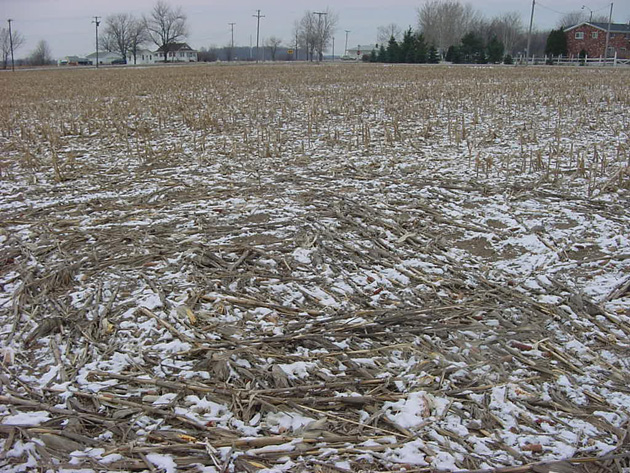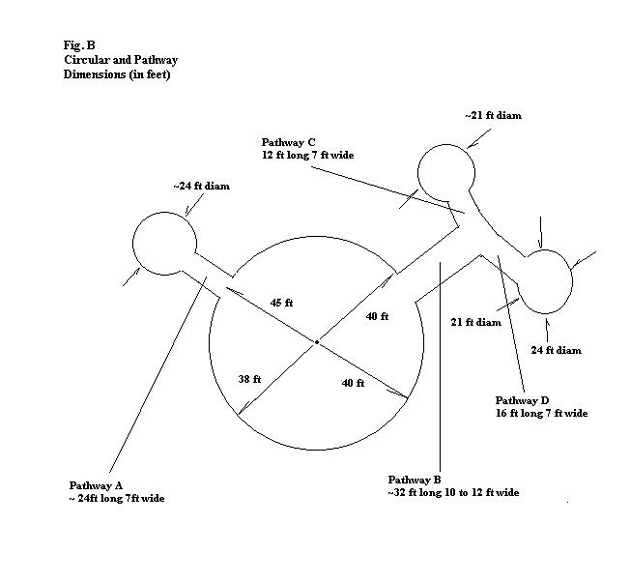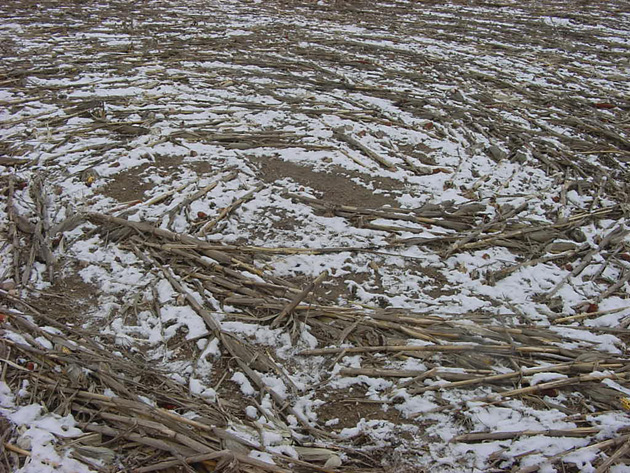|
Reported Crop Circles for the State
of Michigan -
(Southeastern) * (October (late) 2005)
A 4-circle formation with connecting pathways was discovered by a farmer at the end of October while harvesting. The formation appears to have been there for some unknown time. Several weeks later, he reported the find to the landowner who contacted BLT, Inc. to report the formation at the end of November.

The formation was reportedly located somewhere in Southeastern Michigan near Lake Erie. The largest circle elliptical in shape, was 85’ x 78’ in diameter, the smaller circles were 21’-24’ in diameter; the pathways to the smaller circles were 7’ wide, while the main pathway was 12’ wide. The pathways extended into the centers of the circles, with flattened plants underneath the main counter-clockwise lay.

The formation was finally field investigated on December 3 – nearly two months after discovery - by Nick Reiter of the Avalon Foundation for BLT, Inc. and he found:
“No compass anomalies found, no significant changes in magnetometer readings, no Geiger Counter response, no visible node elongation, no expulsion cavities, no evidence of phototropism. Field examination has yielded no evidence of exposure to the frequently documented crop circle energy system.” Also - “formation appears to have occurred when the corn was very dry. Approx. 40% of laid stalks were broken at, or near, the ground, another 40% of laid stalks exhibited "crimping" and/or splitting near base, 20% were bent over at the root ball with no damage to lower stalk.”

Unfortunately, this information has little bearing on the formation’s authentication, for magnetometer and Geiger counter readings have never shown anything abnormal in a crop circle formation past approximately 10 days beyond a formation’s creation date (whereas this formation was first investigated at least 6 weeks after first discovery), and the fact that the farmer drove his harvester repeatedly through the formation may have something to do with the amount of broken stalks found. Also, visible node elongation is very rare, and usually can only be verified through statistical measurements.
Crop
type: corn (maize)
*location withheld by BLT, Inc.
Source: BLT, Inc.
Photos and diagram: Nick Reiter, Avalon Foundation
|
|
City
/ County / Date:
- Manchester,
Washtenaw County (1932)
- Escanaba,
Delta County
(July 24, 1965)
- Dearborn,
Wayne County
(April 1, 1966)
- Oscoda,
Tuttle Marsh Wildlife Area, Iosco County (1982)
- Owosso, Shiawassee County (September, 1989)
- Napoleon, Jackson County
(July 19, 1993)
- [unknown] (April, 1994)
- Adrian Township, Lenawee County (July 1995)
- Filion / Bad Axe, Huron County (September 28,
1995)
- Island Lake State Recreational Area, Livingston County
(February 7, 1997)
- Eaton Rapids, Eaton County (August 27, 2002)
- Albion, Calhoun County (September 29, 2002)
- Freemont Township / Hemlock, Saginaw County
(October 9, 2002)
- Dexter, Washtenaw County
(July 3, 2003)
- Howell Township, Livingston County (July 24, 2003)
- Mason Township, Livingston County (November 2003)
- Mud Lake, Liberty Township, Jackson County
(December 17, 2003)
- Lawton, Van Buren County (August 24, 2004)
- (Southeastern) [*location withheld by BLT, Inc.]
(October (late) 2005)
- New Lothrop, Shiawassee County (June 28, 2006)
- Holt, Ingham County
(June 28, 2006)
- Hartland, Livingston County
(June 28, 2006)
- Dowling, Barry County
(August 5, 2006)
- Howell, Livingston County (October 14, 2006)
- Amasa, Iron County
(December, 2006)
- New Haven Township, Shiawassee County
(October 19, 2007)
|






